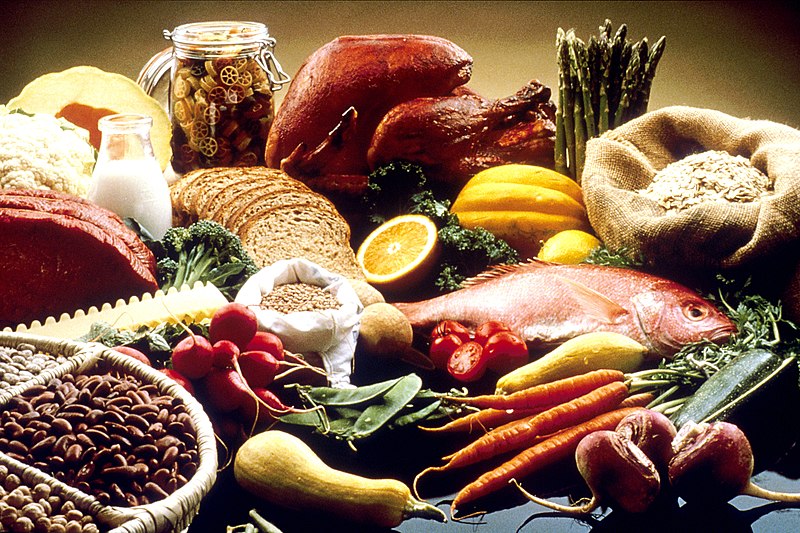Avoiding obesity aids in preventative nutrition immensely. Figure 1 from the CDC’s report on American teens shows that just over ten years ago the obesity rate for adolescents 6-19 years of age was 16%. That number today is larger, over 20%. As more and more youth ages into adulthood already overweight and unhealthy, nutrition guidelines for adults become increasingly important.
The USDA separates their dietary recommendations between men and women in adulthood. The fact is, men and women have similar yet diverging needs as they age. When you’re young, you tend to not need to examine your eating habits nearly as rigorously as when you are older. Men and women share equally in this progression. To prevent conditions like cancer or diabetes later in life, critical thinking applied to your diet during young adulthood is crucial.
Below are the USDA dietary guidelines provided for adult men and women.
Guidelines for Women
- Use a smaller plate at meals to help control the amount of food and calories you eat. Take time to enjoy smaller amounts of food.
- Choose foods like fat-free and low-fat milk, cheese, yogurt, and fortified soymilk to help strengthen bones. Be sure your morning coffee includes fat-free or low-fat milk.
- Add fruit to meals as part of main or side dishes. Choose red, orange, or dark-green vegetables like tomatoes, sweet potatoes, and broccoli, along with other vegetables for meals.
- Sip water or other drinks with few or no calories to help maintain a healthy weight. Keep a water bottle in your bag or at your desk to satisfy your thirst throughout the day.
- Eat whole grains more often. Choose whole grains like brown rice and whole-grain pastas and breads more often. Foods with a high-fiber content can help give you a feeling of fullness and also provide key nutrients.
- Cut calories by cutting out foods high in solid fats and added sugar. Limit fatty meats like ribs, bacon, and hot dogs. Choose cakes, cookies, candies, and ice cream as just occasional treats.
- Try out healthier recipes that use less solid fat, salt, and sugar. Eat at home more often so you can control what you are eating. If you eat out, check and compare nutrition information. Choose healthier options such as baked chicken instead of fried chicken.
- Set a goal to fit in at least 2½ hours of moderate physical activity in your week. Being active 10 minutes at a time also adds to your weekly total. Ask your friends or family to keep you company as you bike, jog, walk, or dance. Don’t forget to do some muscle strengthening activities twice a week.
Guidelines for Men
- There’s no magic food or way to eat. There are some foods men need to eat such as vegetables; fruits; whole grains; protein foods like beans, eggs, or lean meats; and dairy like 1% milk. You’ll get nutrients you need for good health―including magnesium, potassium, calcium, vitamin D, fiber, and protein.
- Keep healthy foods in your kitchen that need little preparation. Keep your fridge filled with carrots, apples, oranges, low-fat yogurt, and eggs. Stock up on fresh, canned, or frozen vegetables and fruits, lean meats, canned beans, and tuna or salmon. Find healthier heat-andeat options to replace heating up a frozen pizza.
- Make sure half your grains are whole grains. Whole grains can help give a feeling of fullness and key nutrients. Choose whole-wheat breads, pasta, and crackers; brown rice; and oatmeal instead of white bread, rice, or other refined-grain products.
- Cut calories by skipping foods high in solid fats and added sugar. Limit fatty meats like ribs, bacon, and hot dogs. Cakes, cookies, candies, and ice cream should be just occasional treats. Use smaller plates to adjust the amount of food you eat.
- Water is your friend. Water is a better choice than many routine drink choices. Beverages can add about 400 calories a day to men’s diets. So limit high-calorie beverages, including those with alcohol. Skip soda, fruit drinks, energy drinks, sports drinks, and other sugary drinks.
- Start cooking more often. Try steaming vegetables, roasting a chicken, and making a tasty veggie sauce for spaghetti from scratch. Eating your own home-cooked meals allows you to control what and how much you eat.
- Use both Nutrition Facts and ingredient labels to discover what nutrients foods and beverages contain. Cut back on foods that have sugar or fat as the first ingredient.
- Be active whenever you can. Have friends or family join you when you go for a long walk, bike, or jog. Vary activities to stay motivated. Set a goal of 2½ hours or more of moderate physical activity a week. Include strengthening your arms, legs, and core muscles at least 2 days a week. Being active just 10 minutes at a time makes a difference.

Healthy eating in middle age does not have to mean eliminating all tasty foods.
As the guidelines state, there is not a magic solution to an unhealthy lifestyle. Only you can choose to make good choices in the way you eat. Later in life the choices you make become increasingly important as a method of eliminating the negative health effects of a bad diet. A good rule of thumb to follow is to significantly cut down on saturated fat combined with sugar as you get older. It may seem hard, and habits built in youth are hard to break, but think about all the healthy foods you know are delicious!